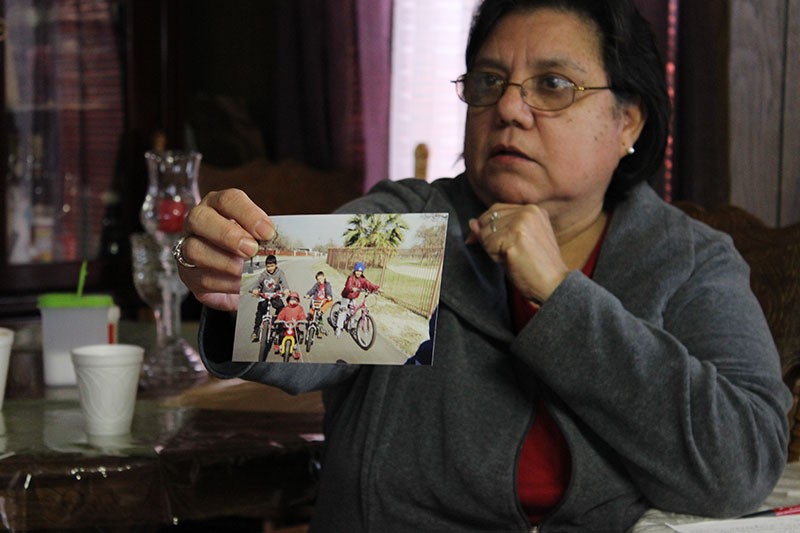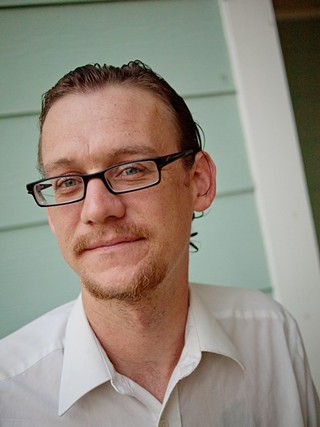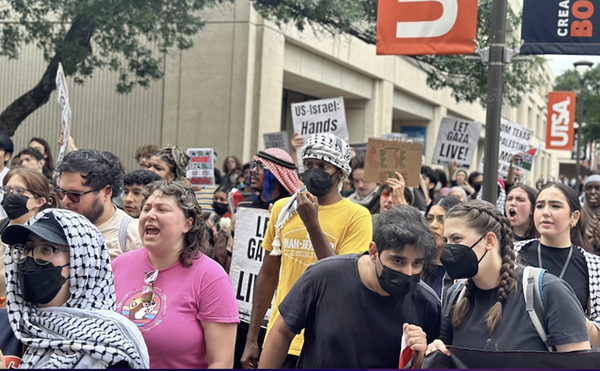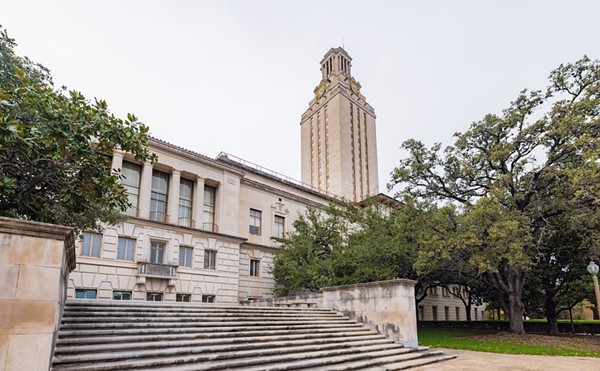
On a dreary Wednesday morning last week, an off-duty Bexar County sheriff's deputy with a steaming mug of coffee stood guard at the entrance of Mission Trails Mobile Home Community in San Antonio's south side.
Behind him, uneven streets full of water-filled potholes snaked through overgrown grass that hugged dilapidated trails with bright orange and blue X's spray-painted on failing trailer frames.
Back in the corner at Lot 90, three cars were parked next to Margarita Flores' residence, a mobile home with red trim and Christmas lights surrounded by plants. A trailer full of belongings sat in the front yard, waiting to be hitched to a truck.
Flores, who has lived at the property for 11 years, has to move out by the end of the month to make way for a $75 million luxury apartment complex that City Council approved amid controversy last May. The vote displaced around 300 people.
"We don't have another option, so I found a lot on some land," Flores said, choking back tears.
She's planning to move just outside San Antonio, to a lot without basic utilities. Flores said Rebecca Viagran, who represents her district on the council, promised to help but didn't follow through.
Viagran did not respond to requests for comment.
Flores — along with three other remaining families in the mobile home park — didn't accept developer White-Conlee's original deal of roughly $7,500 each to move out by January 1. Instead, the developer will give them up to $5,600 and the landlord agreed to waive late rent and fees.
For Liseila Bonilla, a 12-year resident of the park, that amount just doesn't cut it. She and her husband, along with their five children, are looking to rent on the outskirts of town, but they are struggling, and she is fearful.
In the next couple of weeks, Bonilla and her husband must decide to either attempt to move their trailer or rent an apartment.
"If our trailer breaks, then we are going to be homeless. We're only going with what very little we have, which is only two months of rent and deposit," Bonilla said, as her toddler played in her lap.
Either way, Bonilla said her children will be ripped away from their schools, her son will be far away from college, and her husband will have a long trek to work.
"So it's a loss. Now we have to pay all these costs that we don't have money for," Bonilla said.
It's a similar tale of woe for neighbor Oneyda Perez, a six-year resident of Mission Trails, who noted that San Antonio city leaders cast her aside like garbage. She, too, is moving to the city's outskirts.
"Now it's more difficult for me because there are a lot of other costs coming and also lots of work," said Perez, who works as a kitchen assistant at a nearby restaurant. "Here in the city is where I have all my work, so it's going to be more difficult to start again."
Mary Flores — no relation to Margarita Flores — lived in Mission Trails for 38 years. She's now retired and has found a lot for her trailer outside of San Antonio.
"I've been working since I was 12 years old. I got my job, got married, had a family and held down two jobs at a time when I needed to," Mary Flores said. "I'm not afraid of work. I'm retired and I deserve that. These are my golden years. I should be enjoying them and not have to struggle."
Displaced
When cities decide to revitalize places deemed as economically struggling, city leadership works with developers and low-income residents are often pushed out. This is called gentrification, said William Dupont, who directs the Center for Cultural Sustainability at the University of Texas at San Antonio.
"Really, it's just a process where real estate development in an area brings value up so existing residents are incentivized to sell out or can't afford the rent," Dupont said. "And it can break up the community and change it into something else."
Some deem this change as progress — gentrification can have positive results, but not always without severe consequences.
"And in the Missions Historic District, the negative effects are potentially serious not only for the displaced residents, but all of San Antonio," Dupont said.
That's because the Mission compounds are a contender for United Nations' World Heritage site designation. If granted, the Missions would become the first such site in Texas and 22nd in the country.
"A key element of value is, in part, based on who residents are in San Antonio," according to Dupont. "In terms of World Heritage, making a place truly outstanding has a lot to do with people who live in and around existing historic places," Dupont said.
San Antonio leaders need to stem the tide of gentrification's negative aspects in the Mission Historic District, he warned.
"There's great infrastructure, great heritage and people want to develop. That's all really good, but it has to be done in a way that allows existing residents to be part of the equation," Dupont said.
That was not apparently the city's approach in the historic district. Actually, its intervention drove locals out.



















